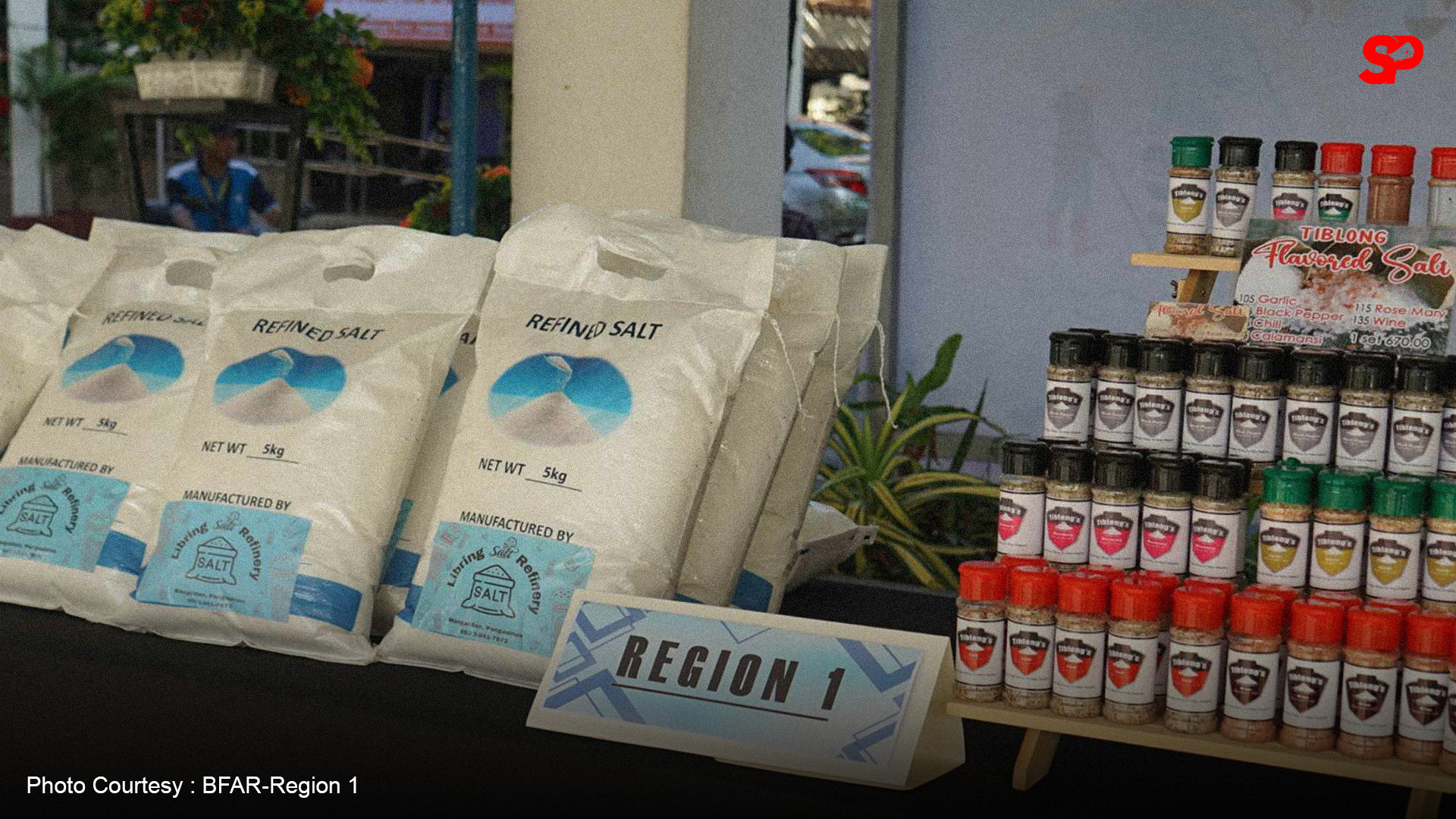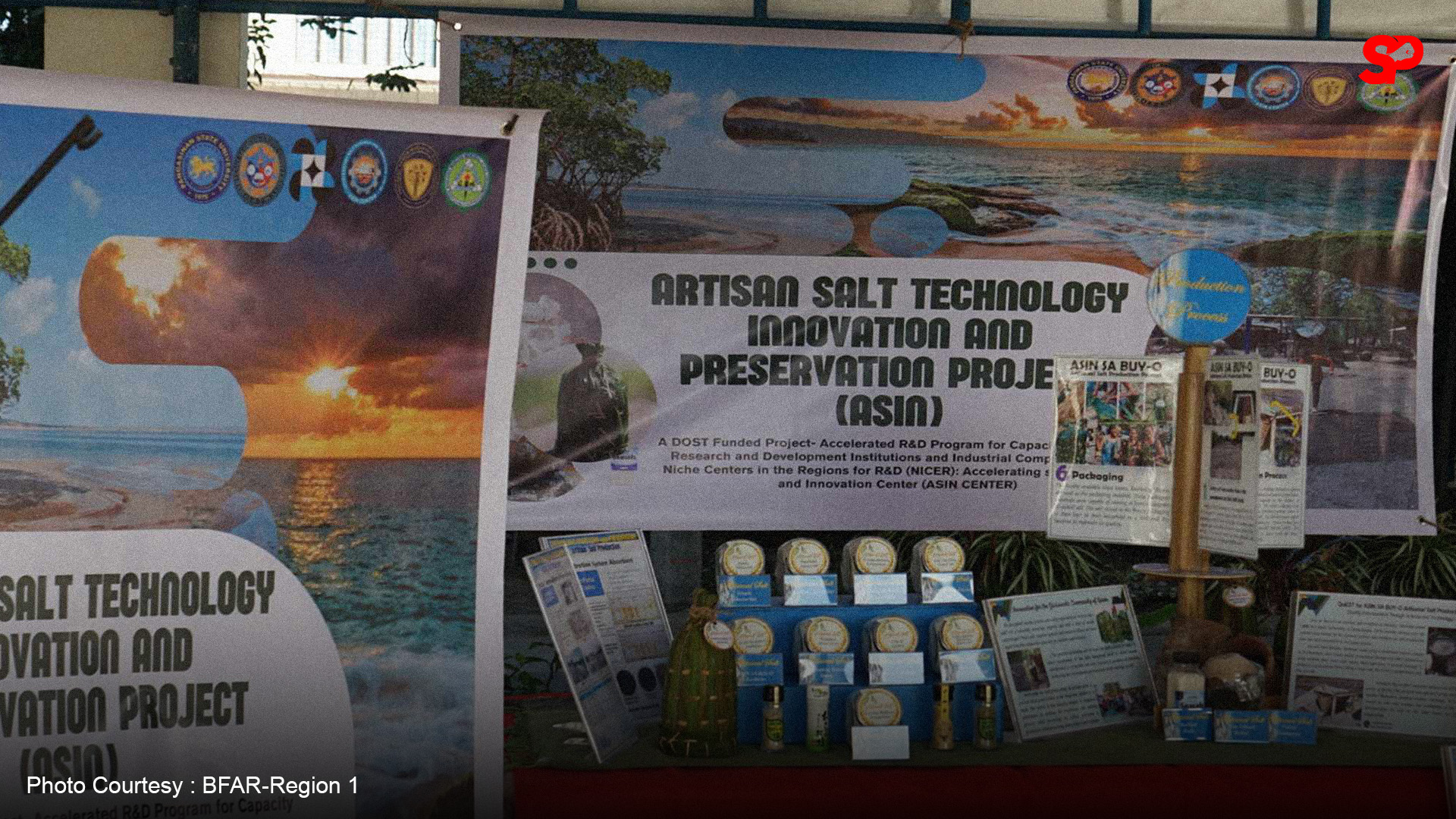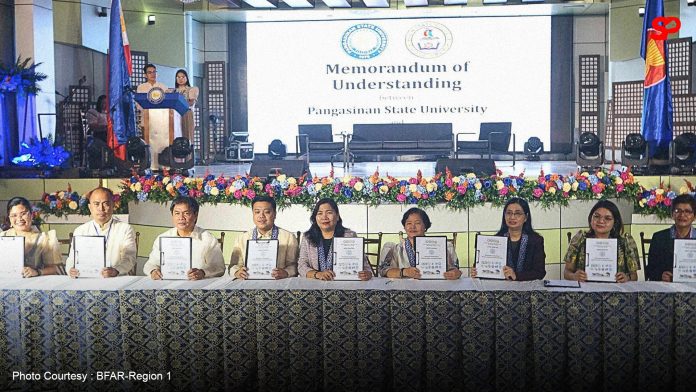2nd Salt Congress focuses on sustainability, innovation, local production
By Eva Visperas
LINGAYEN, Pangasinan – The Philippine Salt Industry is receiving a major push towards revitalization, with the successful conclusion of the 2nd Philippine Salt Congress held on December 12-13, 2024, at Pangasinan State University (PSU).
Themed “SALT: Sustainable Actions in People’s Lives through Technology in the Salt Industry,” the event brought together key stakeholders from government agencies, academia, and the private sector to address challenges, promote innovative technologies, and strengthen local salt production.

 Organized by the Department of Agriculture’s Bureau of Fisheries and Aquatic Resources (DA-BFAR), the Department of Science and Technology (DOST), and Pangasinan State University, the congress focused on advancing the country’s salt industry through sustainable practices, technological innovation, and greater self-sufficiency in salt production.
Organized by the Department of Agriculture’s Bureau of Fisheries and Aquatic Resources (DA-BFAR), the Department of Science and Technology (DOST), and Pangasinan State University, the congress focused on advancing the country’s salt industry through sustainable practices, technological innovation, and greater self-sufficiency in salt production.
The event featured plenary sessions, technical discussions, and research presentations covering various topics, including the DA-BFAR’s OPLAN ASIN program, the Philippine Salt Industry Development Act (RA 11985), and the DOST’s SALT and OneASIN programs aimed at boosting salt production across the country.
One of the key goals of the Salt Congress is to address the severe shortfall in local salt production, which currently meets only 16.78 percent of the country’s annual demand. With a heavy reliance on salt imports, the event emphasized the importance of self-sufficiency and local production to ensure a stable and sustainable supply of this essential commodity.
PSU President Elbert Galas highlighted the university’s role in spearheading research and innovation to drive this effort, particularly through its Accelerating Salt Research and Innovation (ASIN) Center. PSU has also received a P90- million grant from DOST’s Philippine Council for Industry, Energy, and Emerging Technology Research and Development (PCIEERD) to further support salt research and production.
“We are committed to promoting sustainable economic development in the salt industry through research, innovation, and capacity-building initiatives,” Galas said, emphasizing the goal of achieving 100 percent salt sufficiency in the Philippines.
The congress also showcased the collaboration between various government agencies to revitalize the industry. The Philippine Coconut Authority (PCA), in particular, played a pivotal role in emphasizing the synergy between the salt and coconut industries.
PCA Administrator Dr. Dexter Buted delivered a keynote address discussing the Coconut Fertilization Project (CFP), which uses locally produced salt to fertilize coconut farms, reducing reliance on imported fertilizers and creating a sustainable market for Filipino salt producers.
“The synergy between the salt and coconut industries is crucial for sustainable development. By utilizing locally produced salt in coconut farming, we can support both industries, reduce imports, and empower local farmers,” Buted said.
The PCA’s involvement in the congress aligns with Republic Act No. 11985, the Philippine Salt Industry Development Act, which prioritizes the use of locally produced salt in the coconut industry. This initiative is expected to increase demand for salt, benefiting local producers and boosting the country’s agricultural sector.
The provincial government of Pangasinan, a key player in the revival of the salt industry, has also made significant strides in strengthening local salt production. Pangasinan is the first and only local government unit in the country to manage a large-scale 473-hectare salt farm located in Barangay Zaragosa, Bolinao.
The farm’s first harvest produced 6,400 metric tons of salt, with nearly half of the supply sold to the PCA for coconut farm fertilization. The provincial government has allocated ₱50 million to improve the farm’s infrastructure and increase production, with the goal of producing 8,000 metric tons by 2025.
The Bolinao salt farm is just one example of how local governments are contributing to the revival of the salt industry, and the Provincial Government of Pangasinan is working closely with various stakeholders to improve salt production through modern methods and government support programs.
Throughout the congress, participants emphasized the importance of empowering local salt producers through access to technology, training, and government programs. In addition to the DOST’s OneASIN program, which focuses on the sustainable production and processing of salt, government initiatives such as the DA-BFAR’s OPLAN ASIN program have been designed to provide assistance to salt farmers and producers, ensuring they have the tools and resources needed to thrive in a competitive market.
As the congress wrapped up, Buted and other experts reaffirmed the critical need for continued research, collaboration, and technological advancements in the salt industry. By supporting local salt farmers, promoting sustainable practices, and fostering innovation, the Philippines can strengthen its salt industry, reduce its dependence on imports, and contribute to national economic growth.

